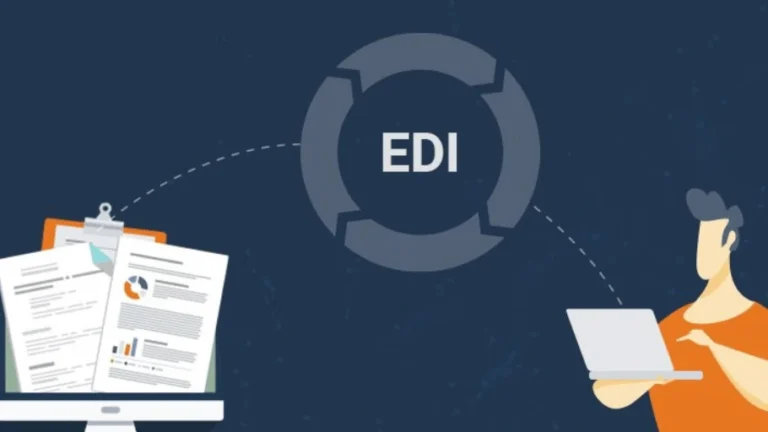Automate inventory purchasing
To reduce the time and effort required to review and decide stock requirements, our cloud ERP software for wholesalers has tools to automate and streamline two common inventory replenishment operations:
- maintenance of appropriate stock levels, i.e. safety stock
- fulfillment of shortfalls on specific Sales Orders, i.e. back orders
The PO generator by Item scans the Stock levels and their respective parameters, minimum stock, and minimum order quantities and creates aggregated Purchase Orders Item by Supplier). The resulting Purchase Orders can be manually tuned.
The PO generator by Order scans the Sales Order List for open and partially fulfilled orders and creates aggregated Purchase Orders (Item by Supplier). This operation takes into account minimum order quantities. The resulting Purchase Orders can be manually tuned.

Two way linkage, Purchase Orders to Sales Orders. The automation creates a permanent and visible link between the respective transactions. This enables users to easily match orders, track and communicate back order status, ETA information, etc.
Users can store multiple preferred suppliers and their respective parameters, such as default supplier, minimum order quantity and value, lead time, last cost. These are actively used by the automation to set the relevant supplier and calibrate the outcomes.
Reports and tools for inventory optimization can be configured and used in conjunction with the Purchase Order generators to optimize service levels. These are prescribed by us on a case by case basis.
Vendor management | inventory | ETA risk solutions
We can provide advice and custom or ‘out of the box’ solutions to help you track supply and manage risk in the supply chain at Item (SKU) level, for example:
Vendor management inventory: we have built vendor system integration solutions to enable our Purchase Orders to interchange Line Item and Document status with their respective Sales Order counterparts in the supplier system. These solutions give real-time visibility on backorder status.
Manufacturer ETA dependencies: The ETA quoted by the manufacturer at the time of them accepting the Purchase Order can be significantly affected by any shortfall in their supply chain.
We have built solutions that enable our customers to track the status of their manufacturing partner’s supply chains. These solutions help our customers to help their Partners to improve reliability.
Vendor inventory availability tracking: Knowing what stock of what Item a vendor can deliver when sometimes requires extensive dialogue and effort, which in turn can impact productivity.
We’ve built solutions to grab availability data from vendors and ingest it into the Item master. This data is then available in the Sales Order capture path.
Purchase Orders can be configured and customized to capture and provide key milestones, timeline, and status data such as ‘Required’, ‘Expected’, ‘Received’, ‘On water’ etc.
Track all vendor interactions and transactions
You can manage your supply chain and the related accounting workflows as one in our cloud ERP solution. You can’t do this in most other order management software for wholesalers. You will eventually fail if you choose any other way.
Our cloud ERP software gives you one joined-up, clear picture of each supplier relationship. Every interaction by email and other communications can be captured, tracked and audited.
Our vendor relationship management tools give your users a complete record of purchasing transactions, their status, and history.
We provide joined-up and adaptable documents, tools, and methods to enable your users to optimize inventory purchasing and other day to day vendor management activities.
One truth…
Track vendor performance
Our cloud ERP solution for wholesalers enables users to capture the data and provides easy to master and use tools to tightly monitor and manage vendor performance. You can track critical metrics such as the:
- percentage of orders that are error-free.
- percentage of orders that are delivered as ordered on the first receipt into Goods In or Drop shipped.
- the number of days between paying for, and getting paid for inventory.
- time from receiving items to their delivery to customers.
- spend with each vendor.
Vivid vendor information
Our inventory purchasing tools enable users to keep and track content-rich and complete information on each vendor and type of inventory. Key information types on the vendor and SKU masters include:
Accounts Payable related data: Early payment discount, Trading currency, Outstanding balance, Credit limit, Payment terms, Tax codes, group and identifier i.e. 1099. Name used on Checks, Bank details.
Complete transaction history: Quotes, Orders, Item Receipts, Invoices, Cash purchases, Payments, Credit notes, Refunds.
Contacts and addresses: Detailed contact information, Payment, and Shipping addresses.
Email: Connect multiple mailboxes. Send and track emails. Filter emails by contact(s). Customizable templates.
Tasks, Reminders, Notes: Keep notes. Create and assign reminders and tasks to other users. Track who did what when.
Documents: Hyperlink to resources, attach external file-sharing systems i.e. Dropbox, Google Drive. Upload Documents i.e. PDFs, Contracts, Images.
Custom Tabs and Fields: Add new areas to store specific data.
Classifications: Segment Suppliers for reporting and user direction.
Multiple preferred Suppliers: A list of suppliers for the Item (SKU)
Supplier Item codes: Cross-referenced to the Sales Item (SKU) code
Minimum Order Quantity: Per Item (SKU) per preferred Supplier
Average Lead Time: Per Item (SKU) per preferred Supplier
Item Tax status: Item Tax information
Last Cost: In multiple currencies
EDI to vendors
Our order management software for wholesalers supports EDI in whatever format, gateway or trading partner is required. We work with multiple gateway and software vendors such as SPS Commerce, B2B Gateway and EDI2XML.
You can connect to EDI and exchange inventory purchasing documents e.g. 850, 856.
Drop ship automation
Directly from the Sales Order List and individual transactions, users can automate the creation and communication of Drop ship inventory purchase orders. Users can apply default or manipulate preferred supplier parameters to direct the automation.
Inventory purchasing forecast, reports and analytics
Our order management software for wholesalers enables users to create detailed sales forecasts at the Item level. This data combined with reports derived from the Sales Order and Sales Invoice data form the cornerstone of demand forecasting.
This information supplemented by Supplier lead times and minimum order quantities, plus any seasonal variations or events influenced by marketing are the essential ingredients of the data set needed to generate incisive demand predictions.
Because our cloud ERP software is a transaction processing system in one database, every status, physical, and financial value change, and the resulting balances are stored in one place and available to the reporting tools.
Users can configure and run reports to filter view and analyze the multiple dimensions and measures of purchasing related data.
There are multiple reporting tools:
- Native: Customizable reports integral to Salesorder.
- Jaspersoft Studio: Advanced custom report builder. We build specialized reports to your specification.
- (Q3 2020) Tableau: Mainstream Business Intelligence tool.
- (Q3 2020) Power BI: Mainstream Business Intelligence tool.
- (Q3 2020) OLAP: A toolkit to connect Excel to data from the Salesorder database.
Inventory purchasing optimization
- Increase service levels
- Protect working capital
- Reduce inventory
- Increase purchasing accuracy
Achieving the right stock, in the right place at the right time means accurate and timely purchasing and inventory decisions.
Inventory decisions have a financial impact on the business. Optimizing inventory to ensure the business can adequately and consistently meet the high’s and low’s of demand is a strategic and constant challenge.
Finding trustworthy experts who can make sense of the problem and provide accurate answers is hard work. We’ve identified and worked with solution partners who know how to organize and leverage the data in Salesorder to automate the demand planning process.
The result of this process is an accurate picture of demand for every item in your inventory. This greatly simplifies and lowers the risk of Purchase Order generation, reduces inventory, and protects working capital.
SKU tracking for compliance and recall
Our order management software’s stock Instance tracking technology provides functionality to track the entire journey of a SKU from the supply chain to the end customer.
Regardless of if the Item is part of a Lot, Batch, or Date or has a unique serial number, the user can quickly find and view every Document in which the specific instance of the Item was recorded.
One truth inventory purchasing

It’s not so obvious at the time of purchase deploying software from multiple vendors will definitely become a roadblock to your growth.
Growth is data-driven. You need one source of the truth to measure and track what you need to know. You can’t easily get this from multiple databases. It’s hard and confusing work nobody wants to do, not to mention the hours of the valuable time it wastes every day.
Salesorder.com is unified order management software for wholesalers, in one database. No data duplication, just one application, we call this joined-up thinking. It maintains one source of the truth, gets everyone on the same page and makes your business smarter.





